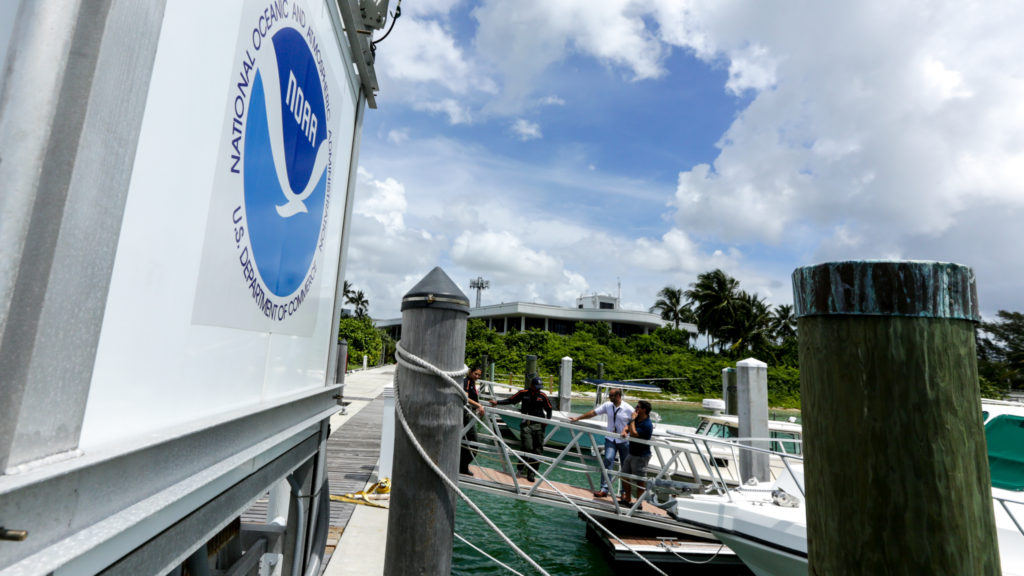NOAA Predicts “Sunny Day” Flooding for 40 Places, Including Virginia Key
Wayne ParryJuly 10, 2019

A tide gauge sensor on Virginia Key, Fla., operated by the National Oceanic and Atmospheric Administration, July 5, 2019. The agency is predicting that Virginia Key will see increased ‘sunny day’ flooding this year and in the years to come because of sea level rise (Key News/Tony Winton)
ATLANTIC CITY, N.J. — The federal government is warning Americans to brace for a “floodier” future.
Government scientists predict 40 places in the U.S. will experience higher than normal rates of so-called sunny day flooding this year because of rising sea levels and an abnormal El Nino weather system.
Virginia Key is one of those locations listed in the report released Wednesday by the National Oceanic and Atmospheric Administration.
The report predicts that sunny day flooding, also known as tidal flooding, will continue to increase.
NOAA maintains a tide gauge sensor on Virginia Key as part of its data collection network. For the Key, the agency predicted 1 to 3 days of severe flooding this year, possibly tying a record three days of flooding set in 2017.
“The future is already here, a floodier future,” said William Sweet, a NOAA oceanographer and lead author of the study.
Sweet said that up till now, it’s taken big tropical storms or hurricanes for major flooding in the Miami area – but that is about to change.
“The transition from no flooding to very noticeable flooding will be fairly quick,” he said. “The water is at the brim.”
The report predicted that annual flood records will be broken again next year and for years and decades to come from sea-level rise.
Virginia Key would see 2 to 5 days of severe flooding each year by 2030, and between 10 and 55 days of flooding each year by 2050.
“We cannot wait to act,” said Nicole LeBoeuf, acting director of NOAA’s Ocean Service. “This issue gets more urgent and complicated with every passing day.”
Global sea levels are rising at a rate of about 3 millimeters a year, or about an inch every eight years, according to Rutgers University researchers, who predict that by 2050, seas off New Jersey will rise by an additional 1.4 feet (0.4 meters).
The study noted floods interfering with traffic in northeast states, swamping septic systems in Florida and choking Delaware and Maryland coastal farms with saltwater over the past year.
Robert Kopp, a leading climate scientist with Rutgers University, who was not involved in the study, said it confirmed many well-established trends.
“It’s simple arithmetic: If you have higher sea level, you will have tides causing flooding,” he said. “We’re not talking about disaster flooding. We’re talking about repetitive flooding that disrupts people’s lives on a daily basis. It’s sometimes called ‘nuisance flooding,’ but it has real impacts and costs.”
High-tide flooding is causing problems including beach erosion, overwhelmed sewer and drinking water systems, closed roadways, disrupted harbor operations, degraded infrastructure and reduced property values — problems which “are nearly certain to get much worse this century,” the report read.
The report’s statistics cover May 2018 through April 2019.
Key News’ Tony Winton contributed to this story



Responses
Sea Level Rise Calls KB’s Stormwater Plan Into Question – Key News
Jul 15
[…] flooding threat to Key Biscayne drew new attention this week with federal warnings on sea level rise, raising the question of whether the Village’s current $25 million dollar Stormwater Master Plan […]
The comments are closed.